Don’t Touch Without Gloves! 8 Poisonous Weeds You Should Not Remove Bare-Handed
While weed spotting is usually geared towards pulling them out quickly, there are exceptions. Check out these poisonous weeds and noxious plants – and grab your best gloves!
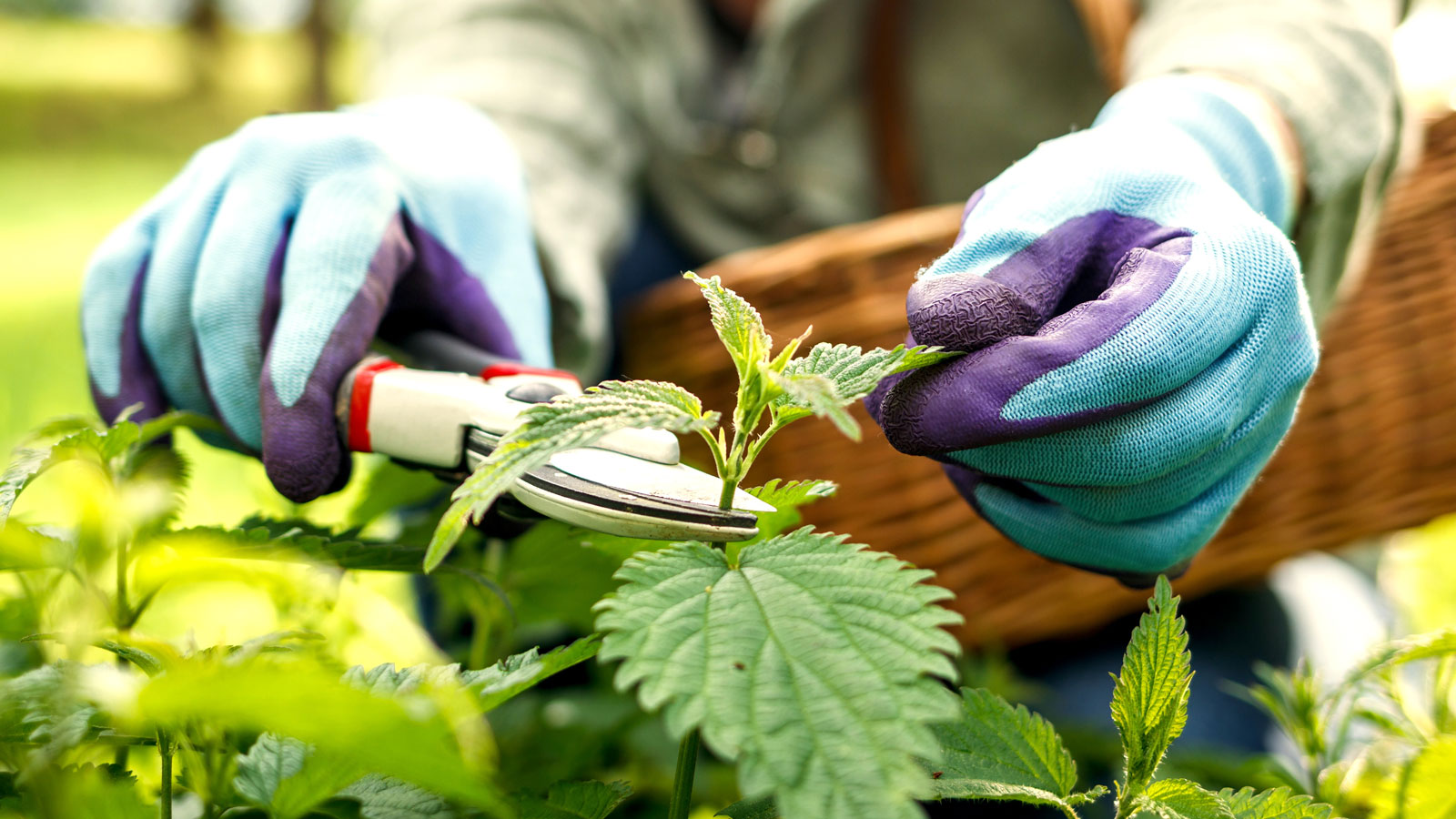

Amy Draiss
You’ve probably heard of poison ivy, and maybe you’ve even had a close personal encounter, but it isn’t the only noxious plant you need to watch out for. There are plenty of poisonous weeds and prickly weeds that cause rashes (and worse), and one or two could well be hiding in plain sight in your garden.
We can spend so much time fretting about weed control because these rough and ready plants may look unsightly, we don’t think of the other problems associated with certain weeds. There are a number of problematic or stinging weeds that cause rashes, itching, stinging, eye irritation and, in extreme cases, infections.
So before you march out into the yard to do battle with the weeds, it’s a good idea to get familiar with those uninvited guests you don’t like the look of – you may well be growing poisonous plants. Keep reading to learn more about the most likely noxious and nasty weeds to crop up in your yard – and what you can do to take action.
Poisonous Weeds
Inadvertent contact with toxic or poisonous weeds can cause skin and eye irritation, blistering, dizziness, nausea, or worse. Make sure you can spot these problematic common weeds – and approach with caution (and protective hand coverings).
1. Poison Ivy
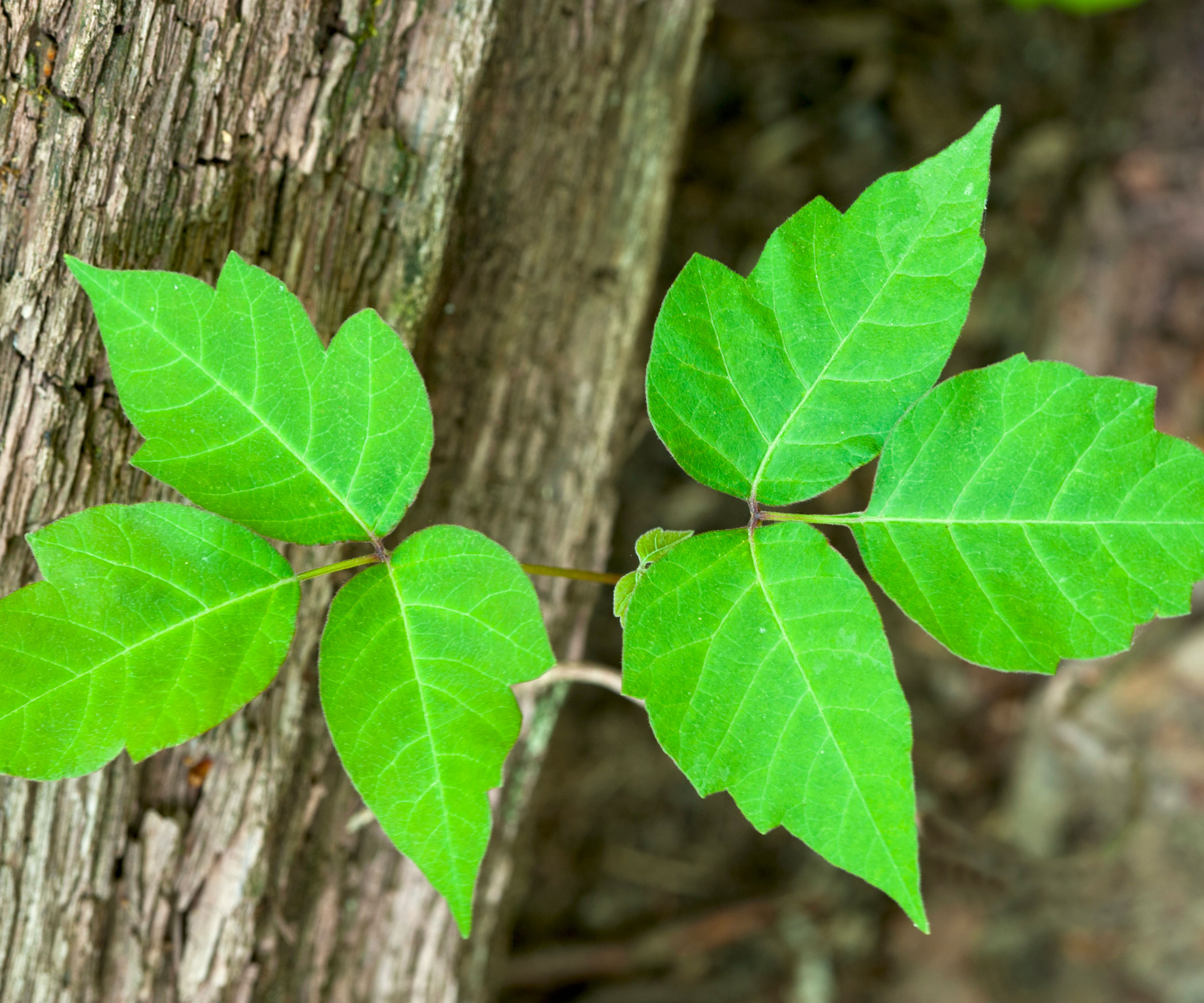
Poison ivy (Toxicodendron radicans), not to be confused with the DC comic book plant/human hybrid, is a poisonous plant native to most of the 48 contiguous states. It is most commonly found vining up trees or other supports, but may also exist as a small shrub. It has three smooth to mildly notched leaflets and bears white waxy coated berry-like fruit. Usually, the middle leaf appears slightly larger than the others.
Like poison oak and poison sumac below, poison ivy contains urushiol. This is an oily sap that causes a rash upon contact. The sap can persist on clothing and equipment for weeks, so if you do come into contact with this noxious weed, wash clothing and tools thoroughly in warm, soapy water.
2. Poison Oak

Atlantic or Eastern poison oak (Toxicodendron pubescens) also usually has three leaflets, although it may have five, seven or nine. The leaves are more rounded than those of poison ivy, looking rather like an oak leaf. They often present as slightly scalloped in shape and may be slightly haired.
Sign up for the Gardening Know How newsletter today and receive a free copy of our e-book "How to Grow Delicious Tomatoes".
Poison oak is found in the South and East US coast, growing as a shrub, but more commonly it grows as a vine in the West. Small, innocuous white flowers will give way to velvety gray or tan berries in the spring. You must never attempt to remove poison oak by burning the leaves to get rid of them, as the fumes can be lethal.
3. Poison Sumac

Poison sumac (Toxicodendron vernix) has clusters of white or green berries. Leaves have a slight sheen, and stems are generally red. This noxious weed is found in the Midwest, Northeast and some of the Southeast US. Poison sumac plants feature seven-13 smooth paired leaflets on each stem.
Ongoing control and removal of poison sumac requires months of patient cutting and regular applications of horticultural vinegar – but only if wearing protective gloves. There is also a harmless sumac plant that differs from poison sumac in the appearance of its berries. These are bright red and positioned upright on the plant.
4. Poison Hemlock
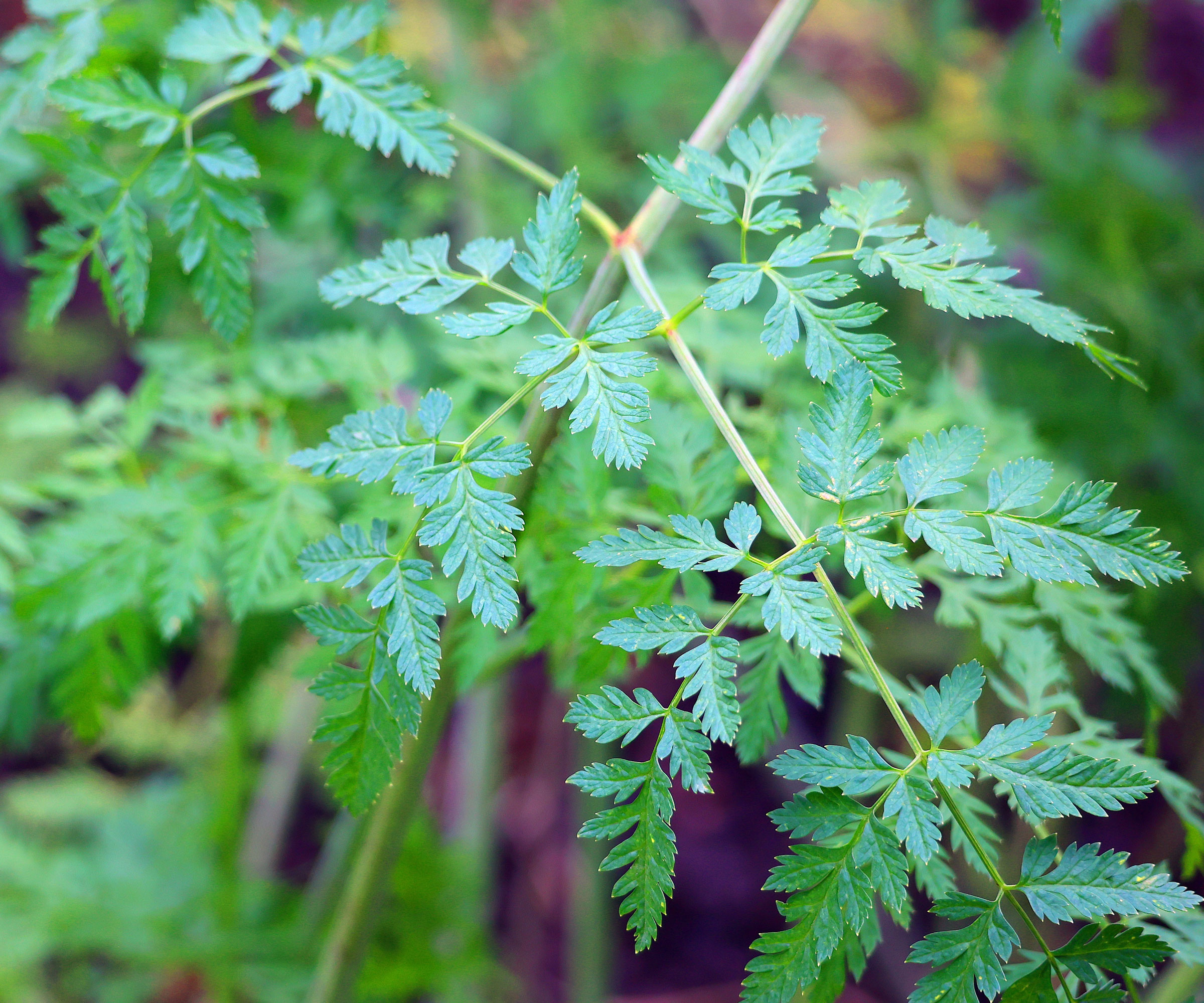
Poison hemlock (Conium maculatum) is native to Europe, Africa and Asia and is invasive in North America. Eating any part of poison hemlock, even in small quantities, can result in death. All parts of the plant contain toxic alkaloids, although the mature fruit and seeds are the most poisonous.
The plant itself is about 3-8ft (1-2m) in height, with hollow stems riddled with ridges and purple spotting, fern-like foliage and a taproot. While it is poisonous when ingested, this weed can also be toxic to sensitive individuals when touched. If seeking to control poison hemlock, you must always wear gloves and other protective clothing when handling this plant.
5. Water Hemlock
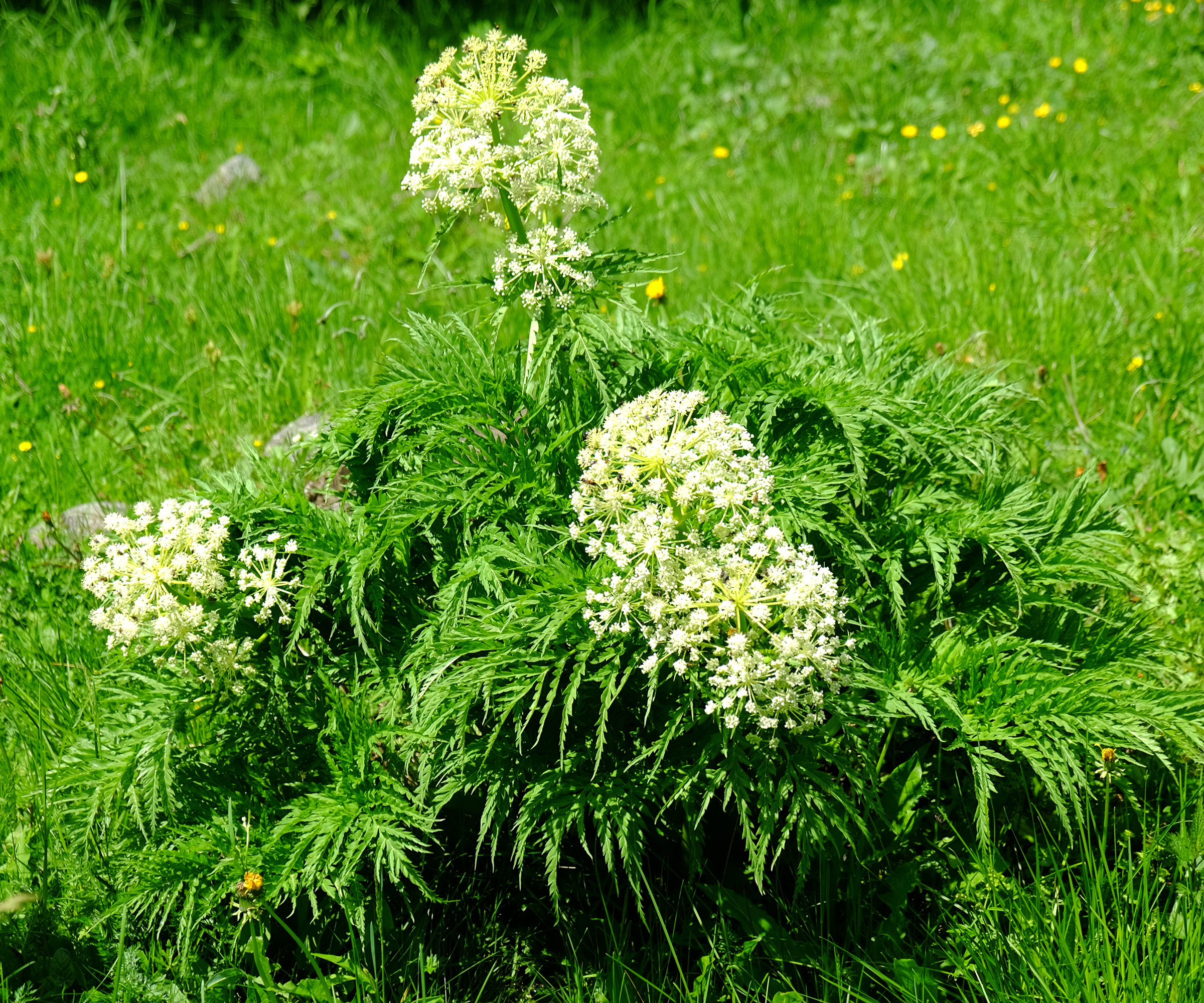
A member of the same family (Apiaceae) as poison hemlock, water hemlock (Cicuta maculata) is even deadlier. To distinguish between these two sinister plants, focus on the purple found on their hollow stems. Water hemlock has purple streaking, while poison hemlock has purple spots. Water hemlock also has fleshy tubers, rather than the deep taproot of poison hemlock, but they both grow to 3-8ft (90cm-2.4m) tall.
Ingestion of all parts of this plant can lead to seizures, paralysis or even death. The toxins can also be absorbed through the skin or breathed in, so either avoid the plant altogether or wear protective garb including goggles and a mask. Wash everything well after handling the plant.
6. Cow Parsnip

Cow parsnip (Heracleum maximum) has hollow stems covered with tiny hairs and radiating foliage. In the plant’s second year, it sends up a 4-15ft (1-4.5m) stem topped with an umbrella of tiny white blooms.
This perennial-biennial contains a sap which, when exposed to the sun, produces toxins that may result in a blistering rash as painful and dangerous as a burn. Because all parts of the cow parsnip plant may cause skin irritation, great care should be taken to cover any exposed skin areas.
Prickly Weeds
Prickly weeds in yard spaces are usually more of an annoyance than a danger. However, festering wounds from stinging weeds can still cause some serious injuries, so it pays to be super-cautious if you suspect the presence of these weeds.
7. Stinging Nettle

Stinging nettle (Urtica dioica) can be found through North America and the temperate regions of the Northern Hemisphere. The plant has 6ft (2m) fibrous, hairy stems surrounded by heart-shaped serrated foliage. Stems are covered with needle-like hairs that contain an array of irritants. When a person or animal brushes against the hairs, they break off, releasing irritants into the skin. Once the spines are lodged in the skin, there is little to do except wait out the symptoms of hives and stinging pain.
These irritants are a survival tool of the plant which also has the advantages of being a perennial and propagating by seed and rhizome. Indeed, trying to control the presence and spread of stinging nettles can feel like an ongoing battle. The best ways to try to fight back are by regular weed whacking and crushing – but only if using protective clothing. Nettles have been purposefully cultivated for use medicinally and as a food source for centuries.
8. Sandbur

Sandbur (Cenchrus longispinus or C. incertus), as the name implies, is generally found in sandy soil. However, it may also grow in grazing pastures or even sports fields and lawns. A summer annual grass, sandbar has sharp, spiny burs that can cause injury to people and pets.
In pastures, livestock are known to get ulcerated mouth wounds and even gastrointestinal issues from swallowing the barbed seed heads. Controlling sandbur weeds can be tricky, but regular lawn-mowing can help keep the irritating sandbur seed heads from developing.
Stay Safe When Handling Weeds
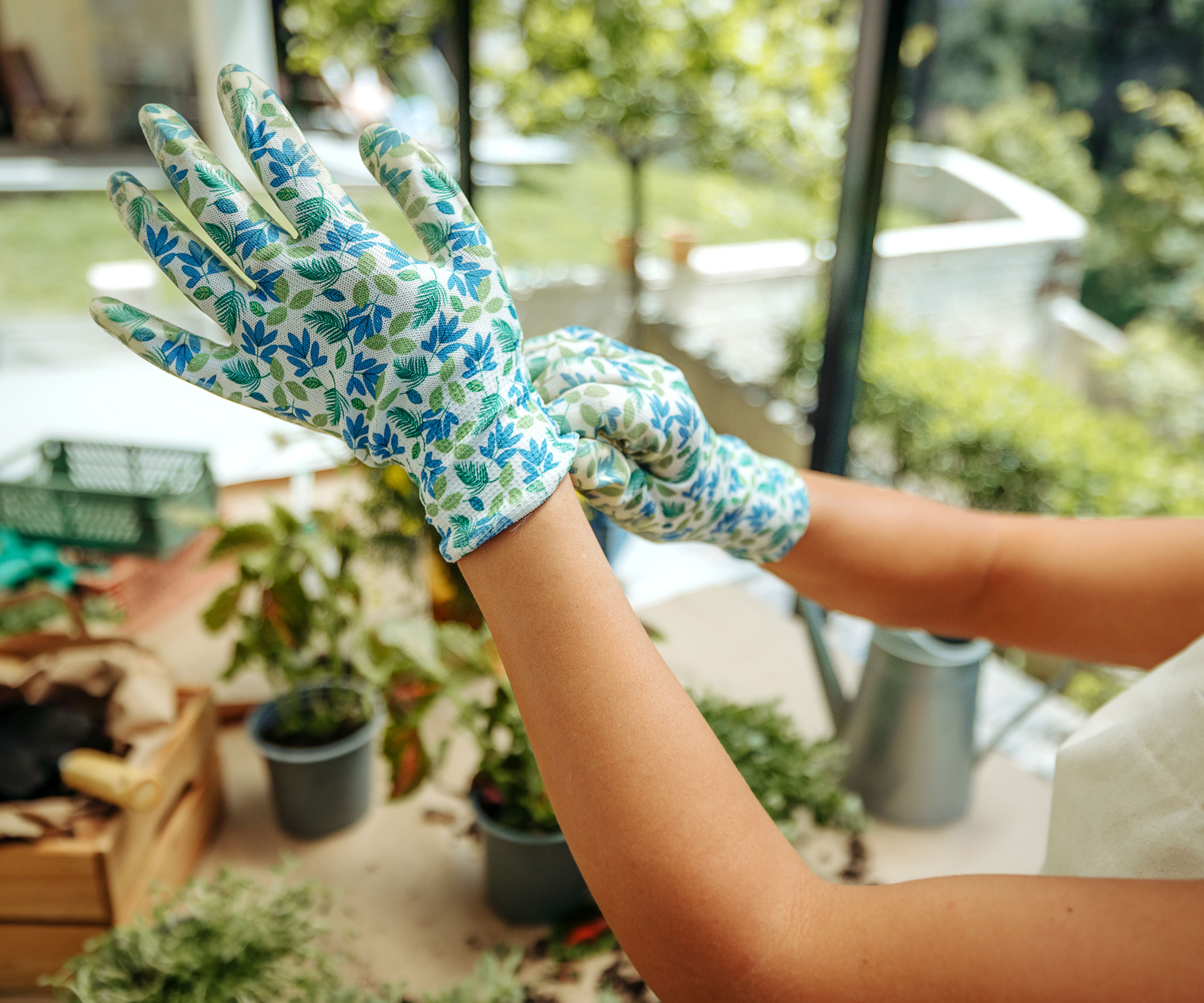
Without wishing to sound alarmist, Mother Nature can be dangerous at times, so you need to protect yourself by wearing the appropriate garb. I recommend long pants and sleeves, sturdy boots and a good pair of gloves. In some cases, safety goggles and a mask wouldn’t be too outlandish. It can’t hurt to invest in some anti-fog goggles from Amazon.com which prevent eye irritation and are comfy for the price.
If you’re concerned about layering up in high summer temperatures, you should at the very least wear arm gaiters with gloves. Better yet, try all-in-one gloves with extra long cuffs. For a budget option that doesn’t skimp on solid protection, G&F Gardening Gloves from Wayfair keep you safe from the common noxious weeds, and come in a choice of rose pink and jade green.
For gardeners with sensitive skin, try a breathable set of long-sleeve DLY canvas and cowhide gloves from Amazon, which have the added benefit of being thorn-proof.
Frequently Asked Questions
What happens when you touch a hemlock?
This depends on how much exposure your skin and eyes have to the hemlock, what kind of hemlock it is, and how sensitive you are to other potential irritants – as well as other factors, such as cuts on the skin. For some gardeners, minimal exposure can result in contact dermatitis – for others, there may be more severe symptoms such as muscle pain or tremors. It’s best to err on the side of caution and resist the urge to touch the plant, or make sure you have a pair of good gloves on.
What happens when you touch Queen Anne's lace?
If your skin comes into contact with the sap of Queen Anne’s lace, it can elicit a reaction called phytophotodermatitis when exposed to the sun as well. Basically, you will get a painful rash. Also, Queen Anne’s lace can be mistaken for poison hemlock, which may also be toxic to those who are sensitive. In either case, it is best to avoid touching the plants or, if you must touch them, cover your hands first.
This article features products available from third party vendors on the Gardening Know How Shop. Keep in mind that our plant inventory is limited - so if you’re thinking of purchasing, don’t wait!

Amy Grant has been gardening for 30 years and writing for 15. A professional chef and caterer, Amy's area of expertise is culinary gardening.
- Amy DraissDigital Community Manager